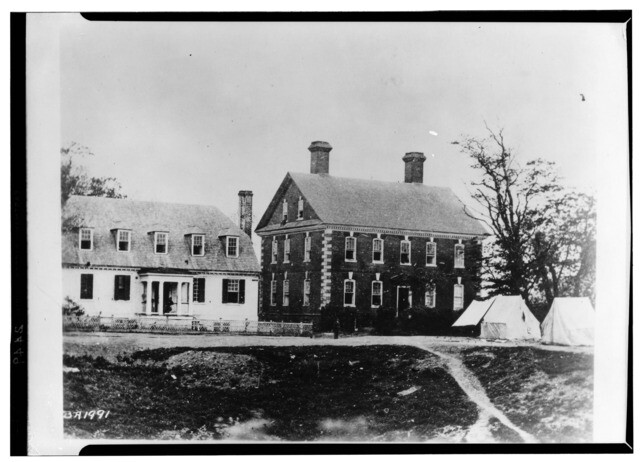Date of Establishment
Thomas Nelson was well-known though out the 1700s, the house, York Hall, was built in 1730. It now sits on the corners of Main Street and Nelson Street in the historical Yorktown, Virginia.
Name & Location
York Hall became the home of Thomas Nelson, who was an influential merchant before becoming a general in the Revolutionary War, as well as the 3rd governor of the Commonwealth of Virginia. He was also known for signing the Declaration of Independence.
Physical Description

York Hall sits on a large property that has been greatly changed from both the Revolutionary and Civil Wars. The grand home was built in Georgian style, simple and balanced in appearance. Made of red bricks with decorative molding under eaves, the home stands three stories tall. It’s trimmed with small white windows all around the up to two stories.
Origin
In 1766 Nelson inherited the house from his father, he raised his family within the home for many years. During the siege of Yorktown Nelson found that Cornwallis and his British troops were taking refuge in Nelson’s family home. He became so enraged he had the house bombed leading to many lost lives. In addition to the Revolutionary War sieges, the house later went on to experience the horror of the Civil War where it was a hospital to care for soldiers. Having so many badly injured the floors and attic were rumored to be stained with a repugnant odor for many years following. In later years a site was found of a second house on the Nelson property, it appeared destroyed by cannon fire as well as holding more British graves.
Mythology and Lore
The Nelson House has no shortage of supernatural experiences from having such a bloody past. To this day caretakers of the home and grounds experience ranges of supernatural contact with the spirits roaming the grounds. There is a stairway off-limits to visitors because of a soldier’s spirit violently claiming the space. In the twentieth century, reports came of doors to the stairway slamming or being whipped opened violently. Rooms seem to shake, something crashes into the sideboards frequently, and dishes are sent flying to the floor.
There is also the spirit of a British soldier who fell in love with his nurse but died from his wounds before they could be together. Witness have reported seeing his ghost in the attic window covered in blood and waiting for his love to come back. He is also rumored to be the maker of haunting footsteps, cold spots, lights flickering, and objects being moved. There is also a woman’s spirit reported to be sobbing on the 3rd floor and attic of the home; many believe it could be the soldier’s lover and others a family member that cared for the spirits and home after the war.
All across the Nelson grounds, witnesses have reported seeing figures of men dressed in red dashing and ducking behind trees. Some report just seeing the figures of soldiers walking the grounds as if on patrol. Along with the soldier like figures, there is a healthy dose of other spirits roaming the grounds. Visitors and caretakers report various styles of clothing, ages, and genders to these spirits; as well as supernatural experiences. Some seem to be friendly and visiting the house, some like to play tricks, others are darker, but the Nelson House remains one of the oldest haunted places in America today.
Is there anything we missed about the Nelson House? Let us know in the comments section below!

